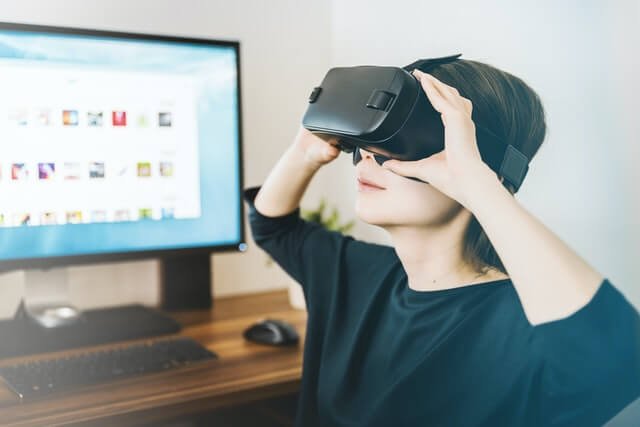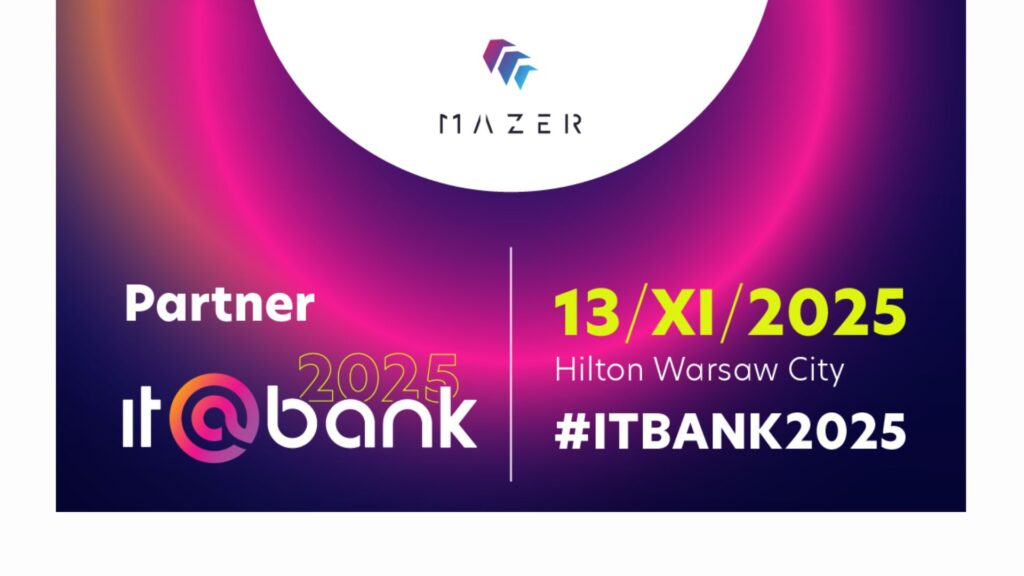The evolution of eLearning and its next big step forward
Table of Contents:
One innovation that has undoubtedly made the overall quality of our lives much better is eLearning. Besides its instructional purposes, it also allows us to strive for professional and personal growth and success. Thanks to technological development, eLearning has recently been moving towards more collaborative and inclusive approaches. If you have ever asked yourself the question ‘What is eLearning?’ or ‘How did eLearning start?’ this article will give you the answers and explain much more about this innovative way of learning. We’ll explain the definition, the benefits of eLearning, and what the latest changes are – for example, we will dive deep into VR in eLearning.
What is eLearning?
There is no denying that eLearning’s popularity has skyrocketed over the past decade. The eLearning market is expected to reach $275 billion by 2022. So, what is eLearning? Also called electronic learning, it is a form of learning that uses electronic technologies to facilitate access to educational resources and create a more dynamic and instructive learning environment. Most often, it is outside the brick-and-mortar classroom, using interactive whiteboards, online classes, etc. Very often, eLearning involves a situation where learners interact with instructors online in real-time. eLearning can be delivered over video conference software or through an LMS (Learning Management System – software applications used to create, deliver, and track training programs).
Nowadays, it is much more than just delivering information. Digital classes are available on numerous digital devices, from desktop computers to mobile phones and other handheld devices. This makes it really easy for users to learn anytime and anywhere. In general, there are four business types of eLearning: employee training, compliance training, customer training, and partner training.
Advantages of eLearning
eLearning provides numerous benefits to both learners and organizations. Employees benefit from convenient training that enhances their skills and knowledge and organizations can use it to train their employees, partners, and customers to increase adoption, retention, and revenue. Let’s explain more on why eLearning is beneficial.
What’s in eLearning for businesses
Let’s start with eLearning’s benefits from a company’s point of view. First of all, eLearning is cost-effective. It removes the need for onsite instructors, venues, and printed course materials. Then, it saves time as the content can be easily and quickly updated if needed and training delivery is fully managed by the LMS. It has been proved that the electronic form of learning uses 40-60% less employee time compared to instructor-led training. In addition, electronic learning improves performance and productivity – it’s a great way to learn more easily and quickly so the users feel more motivated and engaged. Lastly, digital learning has a lower environmental impact than other educational forms. It is a great alternative to paper-based training.
What’s in eLearning for users
eLearning is affordable and timesaving. It can be accessed from anywhere, including a learner’s home, which is extremely convenient, especially now during the COVID-19 pandemic. No travel costs, printed materials, or commuting to the office or learning institute. Digital learning offers users the chance to study anywhere and anytime. It is easy to track progress as most learning apps enable the learner to monitor their own progress. Also, teachers can easily keep track of where their students are up to in a particular course.
Last but not least, eLearning is discreet and convenient for those who don’t feel comfortable learning in a large group. It allows people of all ages and experiences to access education.
The history of electronic learning
It all started in the 1840s when stenography was invented. Isaac Pitman, an English teacher, used correspondence to teach shorthand (stenography) to his students. He sent assignments via mail, and they mailed their assignments back to him. In 1924, the first testing machine, called the ‘Automatic Teacher’, was invented, making it possible for students to test themselves. In 1954, a Harvard professor, BF Skinner, devised the teaching machine ‘Glider’ which enabled schools to administer programmed instructions to students. Six years later, the first computer-based training program (PLATO-Programmed Logic for Automated Teaching Operations) was introduced to the world.
The 70s brought more interactive online learning. Once the Internet became widely available, the British Open University started providing its students with interactive educational experiences through CICERO. In 1980, the first iteration of the personal computer was invented by Apple and ten years later, certain schools were established to provide online courses only. In 1995, LMS (Learning Management Systems) started to gain popularity. The costs of distance learning were reduced; thus, education could be brought to a wider audience. Then, 2000 came and companies started using eLearning to train their employees. Once Udemy, now one of the world’s biggest and most famous online course platforms, was founded in 2010, things began to move very quickly, especially when social media became popular and common. More and more innovations have been added and now we have VR in eLearning, and the VR classroom is something we all know well, especially since the beginning of the COVID-19 crisis. eLearning has been used to continue students’ education while in quarantine or lockdown and VR has been a great help as well.
Endless possibilities of VR in eLearning
We live in the age of technology with eLearning at the forefront of digital transformation and innovation, which was the case even before the COVID-19 pandemic. The impacts of the pandemic have created a need for even more immersive eLearning platforms, and what else could be better than VR classrooms? Virtual reality creates interactive learning modules by incorporating 3D graphics with real-world experiences. It enables students to interact with the study material using all five senses.
Here are some examples of VR in eLearning.
- Training simulations – students are provided with online training simulations when they are immersed in a virtual environment. The technology is widely used in medicine and healthcare, aviation, and electronics, etc. Trainees can step into a virtual 3D environment which is set up like the real world. Scenarios present a virtual environment that tests trainees’ abilities to handle and manage situations they are presented with.
- E-trips – learners are transported to new locations where they might study the geography of the land, architecture, and buildings, etc.
- VR classroom experience – the classroom experience is important to both students and teachers alike. VR in eLearning provides unprecedented levels of interactivity and enables students and teacher to have a shared learning experience, with everyone able to interact with the learning materials.
- Gamification – making learning more interactive and fun. Students are highly immersed in a virtual world and interact with virtual elements. The technology is currently used in interior design and civil engineering, as well as other areas.
- Customized online courses – companies and institutes can give up traditional teaching methods and place students in a virtual world that will allow them to go through real-life experiences to test their skills, for example, public speaking or other soft skills.
Benefits of VR in eLearning
VR in eLearning offers so much more than just eLearning, not to mention traditional teaching methods. Virtual reality accelerates the learning process as it involves problem solving, powerful visualization, and decision making – the elements that enhance the learning experience. On top of this, VR technology provides a safe learning environment – simulations let trainees learn in an environment that is fully controlled. It also increases engagement levels and motivation among learners and prevents alienation. VR in eLearning is cost-effective – as mentioned above, there are no costs for printed materials, onsite instructors, or expensive venues. Hardware and software costs decrease every year and virtual education aids are usually included in the price, meaning that the technology is more and more accessible for consumers. What is more, students now have access to a wide range of courses and programs without the need to travel or relocate, with the ability to use self-study to get instant feedback and results or easily connect with teachers and professors online. So, to sum up, it is clear that eLearning in combination with VR technology is set to gradually replace traditional methods of online learning.
The transformative power of eLearning in virtual spaces
In 2025, it is projected that approximately 30% of universities and colleges worldwide will offer VR-based courses, reflecting a significant shift towards integrating immersive technologies into higher education curricula.
Enhancing learning outcomes through immersion
The effectiveness of VR in education has been underscored by various studies demonstrating its impact on learning outcomes. Research indicates that students participating in VR training can learn four times faster than those in traditional classroom settings. This acceleration in learning is attributed to the immersive nature of VR, which fosters deeper emotional connections to the material being studied.
For instance, a study found that learners using electronic learning VR technology felt 3.5 times more emotionally connected to their training compared to their classroom counterparts. This emotional engagement is crucial for retention and application of knowledge, making VR an invaluable tool for educators.
Practical applications of VR in various disciplines
VR’s versatility allows it to be applied across various disciplines, enhancing both theoretical understanding and practical skills. In fields such as medicine, VR is used for simulation-based training, enabling students to practice complex procedures on virtual patients without the risks associated with real-life practice.
Medical schools are increasingly utilizing elearning in virtual spaces for diagnosis training, allowing students to interact with virtual anatomical structures and practice surgical techniques. VR in medical training is only an example – in engineering and architecture, students can explore and manipulate 3D models of structures, providing a hands-on experience that enhances spatial awareness and design skills; it’s also worth to look into the applications of VR in hospitality training.
The role of analytics in performance assessment
As VR technology matures, its role in performance assessment is becoming more pronounced. Traditional assessments often fail to capture the full spectrum of a learner’s capabilities. However, immersive VR experiences enable educators to gain deeper insights into learner progress and skill acquisition.
By analyzing interactions within virtual environments, instructors can identify specific areas where students excel or struggle, allowing for targeted interventions. This shift towards performance-based assessments not only enhances the evaluation process but also aligns more closely with real-world applications of knowledge.
Industry adoption and future potential of eLearning in virtual spaces
The adoption of VR is not limited to educational institutions; industries are also recognizing its potential for training and development. A survey revealed that 51% of companies either plan to implement or have already deployed VR ecosystems in their training programs. The benefits include improved productivity, enhanced innovation, and reduced costs associated with traditional training methods. As businesses leverage VR for remote collaboration and skills development, the technology’s influence on professional training will likely expand further.
eLearning in Virtual Reality – a conclusion
The integration of virtual reality into eLearning signifies a paradigm shift towards more engaging and effective learning experiences. With its ability to create immersive environments that enhance emotional connection and retention, VR stands poised to redefine educational methodologies across various fields. As we move forward into 2024 and beyond, the continued evolution of VR technology will undoubtedly open new avenues for learning, making it an essential component of modern education.

Author: Rafał Siejca
Rafal has over twenty years of corporate experience, including roles at Millennium Bank, Comarch, and leading software teams at PZU, one of Europe’s largest insurance companies. As one of Poland’s few true VR experts with a decade of experience, he ensures timely, high-quality project delivery as CEO and CTO.










